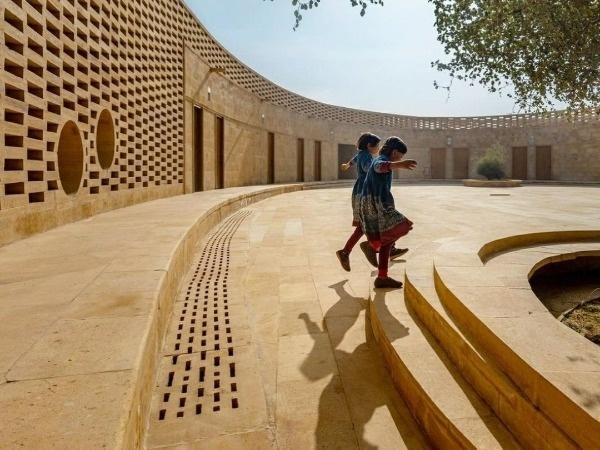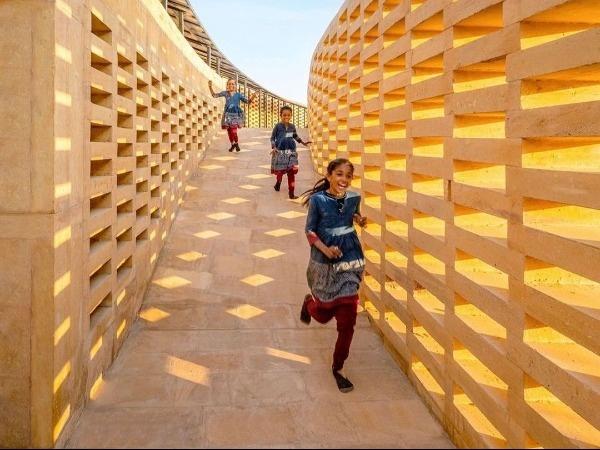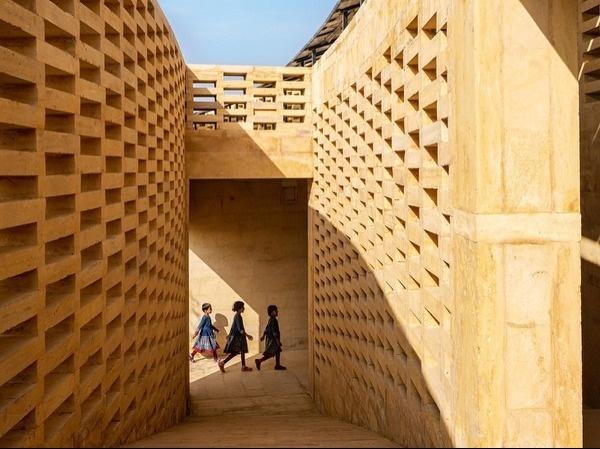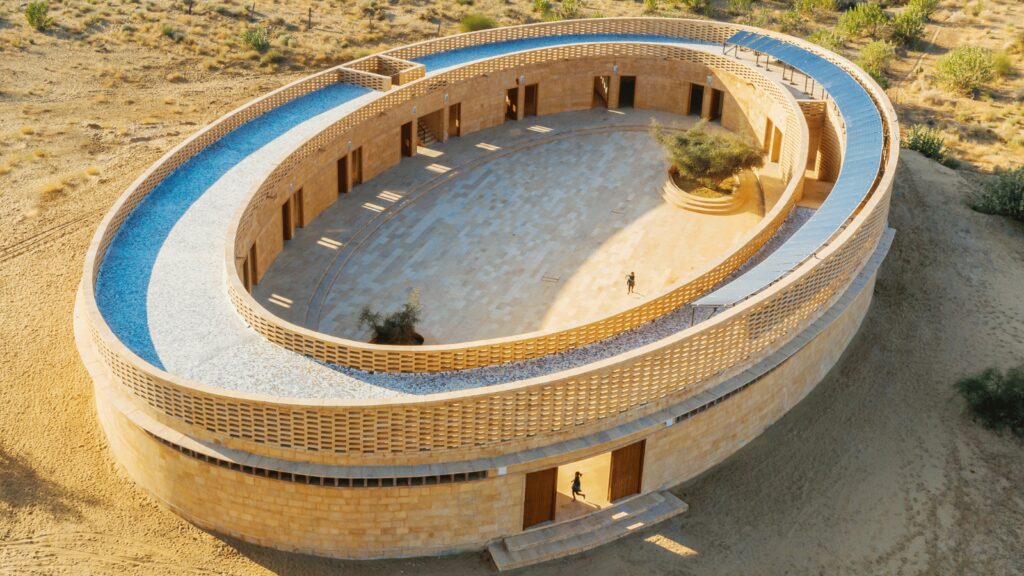This Girls’ School In The Middle Of The Thar Desert Needs No ACs.
In Kanoi village, a six-minute drive from Jaisalmer’s famous Sam Dunes, a remarkable school has been built to educate and empower girls. The Rajkumari Ratnavati Girls’ School, made of yellow sandstone and without air conditioning, offers students a safe and protected space to study and play despite the harsh conditions of the Thar desert, where temperatures can reach up to 50 degrees Celsius and winds carry sand throughout the day. The visually stunning oval-shaped school, designed to blend in with the desert landscape, has a capacity for 400 girls from kindergarten to Class X and features a Gyaan Centre. Additionally, the complex includes a textile museum, performance hall, and an exhibition space for artisans to showcase their crafts. Another building will provide training for women in traditional arts like weaving and textiles to preserve these fading handicrafts.
RELEVANT SUSTAINABLE GOALS



The Rajkumari Ratnavati Girls’ School
The Rajkumari Ratnavati Girls’ School, The Rajkumari Ratnavati Girls’ School, , visually stunning oval-shaped school, designed to blend in with the desert landscape, has a capacity for 400 girls from kindergarten to Class X and features a Gyaan Centre. Additionally, the complex includes a textile museum, performance hall, and an exhibition space for artisans to showcase their crafts. Another building will provide training for women in traditional arts like weaving and textiles to preserve these fading handicrafts.

The school blends with the desert landscape with the beautiful Jali wall at the roofs and solar installations ensuring sustainable principles. The solar panels on top of the building work as a canopy, and provide shade while simultaneously powering the building. A cooling system uses geothermal energy at night to cool the building during the day.
An Architecture marvel
A unique structure in the desert, the Rajkumari Ratnavati Girls’ School was built to address the alarmingly low literacy rates and high dropout rates of schoolgirls in the state. It took a decade for Michael Daube, founder of CITTA, a non-profit organisation, to conceptualise the building, and help it materialise. Michael roped in US-based architect Diana Kellogg, who conceived the design.

The architect behind the project, Diana Kellogg, describes the craftsmen who worked on the school as magicians for their stonework, saying that even the washroom sinks were carved from stone, a feat she never thought possible in the US. Michael, the creator of the school, chose Jaisalmer as its location to support girls in need and empower more women through education.

The logo, representing healthcare, women empowerment, and education, is meant to symbolize the crucial elements necessary for women to hold a powerful place in the world. Michael, an artist himself, believes that providing a space for exploration and growth will allow the girls to flourish. The dream of building this monumental school where parents would be proud to send their daughters began in 2010, but it took time to gather the support of all stakeholders, including royalty, politicians, celebrities, and more. Michael says that raising money for causes like this is a greater challenge than raising funds for slums in Mumbai.

The interior of the school boasts local rosewood furniture and seating made with Charpai, a traditional South Asian bed weaving technique. Along with its culturally-sensitive design, the school uniforms for girls were created by Indian fashion designer Sabyasachi Mukherjee, featuring Ajrak, a form of block printing indigenous to the area. The recently completed building will be part of the larger GYAAN Center complex, which will also include the Medha exhibition space and the Women’s Cooperative building where local artisans will instruct women in traditional handcrafts.
You may also be interested in :
What Is In Sight For The Future Of Child Labor ?



